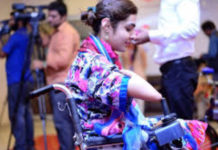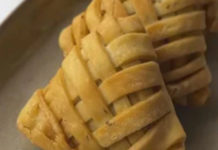Ramadan, a holy month of fasting for the Muslims, is just around the corner. Even though it is an obligation only for the healthy Muslims, countless people with various ailments try to fast as well. Speaking in particular about people with diabetes, it is estimated that worldwide more than 50 million sufferers fast during Ramadan.
In order to make sure that a person doesn’t compromise his health while seeking the forgiveness of Allah, it is necessary that they follow certain guidelines. Fasting is not meant to create excessive hardship on the individuals. Nevertheless, many patients with diabetes insist on fasting during Ramadan, thereby creating a medical challenge for themselves and their health care providers. It is increasingly important that medical professionals be aware of potential risks associated with fasting during Ramadan and with approaches to mitigate those risks.

Tips for fasting with Diabetes:
- Consume starchy food for Sehri, like rice and bread.
- Have fruit, vegetables, daal and yogurt for Sehri as well.
- Have a meal at Sehri just before sunrise and not at midnight. This will help to keep your blood glucose levels more evenly balanced.
- Try having sugar-free drinks for Iftaar. Drink water if you feel thirsty and do not add sugar to drinks.
- Do not have too many fried foods. Try having more fresh fruits.
- If at any point during the day you feel faint, immediately break it and do not delay treatment.
Risks involved:
- Hypoglycemia
- Hyperglycemia
- Diabetic ketoacidosis
- Dehydration and thrombosis

Things to remember:
- Individualization: You should keep in mind that each individual has a different case and that care must be highly individualized.
- Frequent monitoring of glycemia: It is essential that patients have the means to monitor their blood glucose levels multiple times daily. This is especially critical in patients with type 1 diabetes and in patients with type 2 diabetes who require insulin.
- Nutrition: During Ramadan there is a major change in the dietary pattern compared with other times of the year. Most health problems are likely to arise from inappropriate diet or as a consequence of overeating and insufficient sleep. Therefore, the diet during Ramadan for people with diabetes should not differ significantly from a healthy and balanced diet. Also, one should intake a large amount of fluids.
- Exercise: Normal levels of physical activity may be maintained. However, an excessive physical activity may lead to a higher risk of hypoglycemia and should be avoided.
- Breaking the fast: All patients should understand that they must always and immediately end their fast if hypoglycemia (blood glucose of <60 mg/dl) occurs because their blood glucose may drop further if they delay treatment. The fast should also be broken if blood glucose reaches <70 mg/dl in the first few hours after the start of the fast, especially if insulin, sulfonylurea drugs, or meglitinide are taken at predawn. Finally, the fast should be broken if blood glucose exceeds 300 mg/dl. P
It is important to understand that health comes fast and it is also advisable to break the fast if you are not feeling well rather than compromising with one’s health and then being exposed to higher risks.
We hope that you all will have a blissful month and would practice it in its true essence whilst make sure that you stay healthy and fit.
This is a basic guideline for diabetics. People with advanced diabetes should consult their physicians before fasting.





































